
This blog post is also available as a nicely designed PDF. You can download it for free here.
In 2010 I started my first assignment as a Scrum Master. From that moment on, I captured my struggles, failures, and successes in a series of blog posts. Mostly intended to help myself reflect on my role, receive feedback from other Scrum practitioners, and make improvements accordingly. Over the years, the sum of these blog posts resulted in the paper “The 8 Stances Of A Scrum Master”. A paper I published in 2017 and which includes inspiration from other experienced Scrum practitioners, with Gunther Verheyen in particular.
Already at that point in time, my message & expectation wasn’t that you can only be a successful Scrum Master if you master all 8 stances. It’s good to be aware of them though. For example, I’ve always been “average” at coaching but excelled in facilitation. Luckily, other Scrum Masters I’ve worked with mastered different stances. So, together, we were able to help the organization work with Scrum.
In the years after I’ve published the paper, my understanding of the Scrum Master role improved, refined, and changed. I never updated the original paper with my new insights. I did incorporate my new ideas into the Scrum.org Professional Scrum Master II class, which I created together with Christiaan Verwijs. The popularity of the original paper exceeded my wildest expectations. Even today, it’s considered useful reading material for many Scrum Masters.
I don’t have the intention to completely rewrite the original paper. I do want to use this blog post to share some important insights that emerged in the meantime. In this blog post, I give an overview of the Scrum Master role, describe how the role embodies 6 stances, and explain why I don’t consider servant leader and manager valid stances anymore.
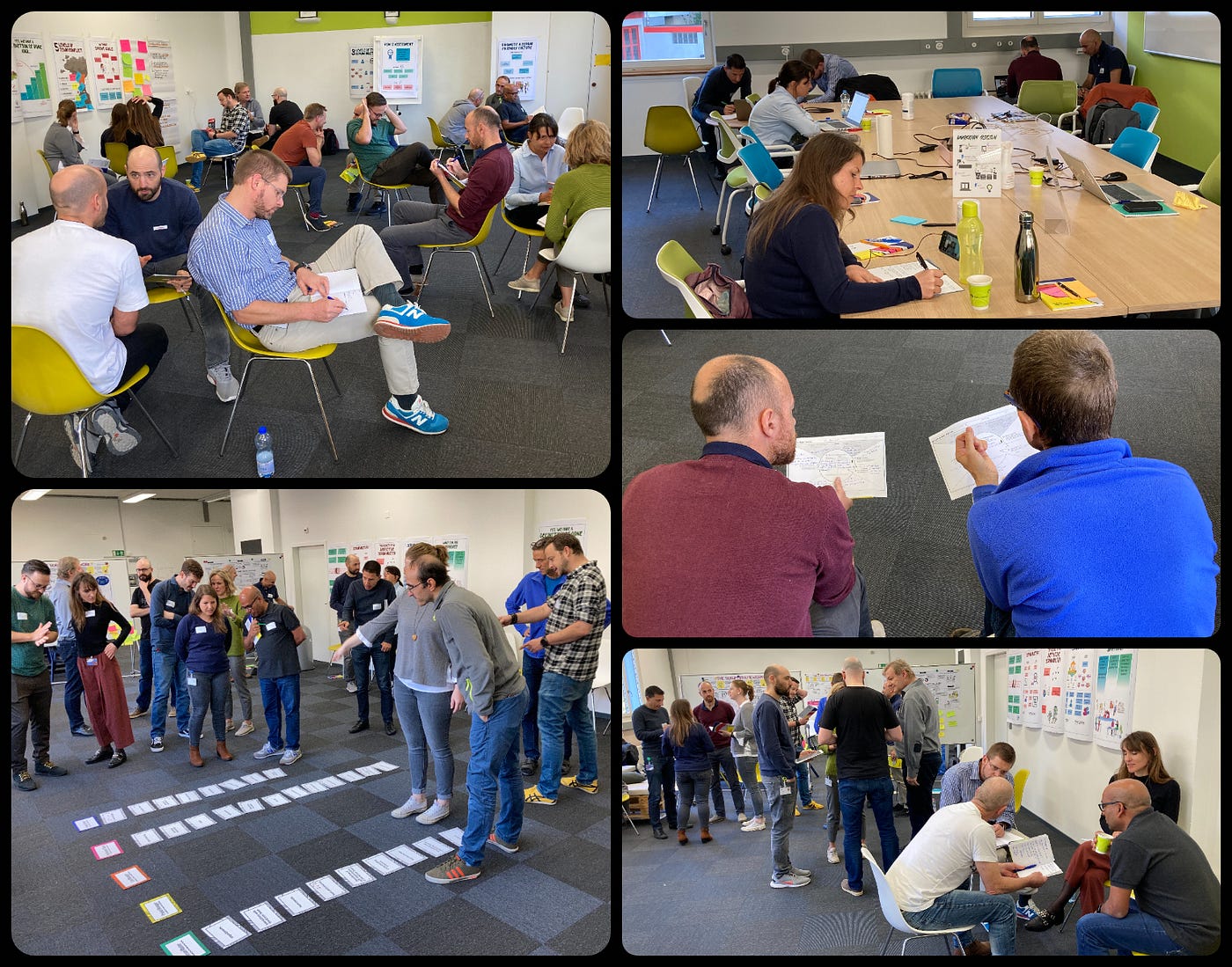
In the Scrum.org PSM II class, participants learn more about the misunderstood and preferred stances of a Scrum Master and what it takes to become an effective Scrum Master.
The 6 Scrum Master Stances
As Johannes Schartau, Christiaan Verwijs, and I describe in our Scrum paper, it’s up to the Scrum Master to include the perspective of empirical process control and the quality by which transparency, inspection, and adaptation are taking shape in and around the Scrum team. The Scrum Master is there to make the elements of the Scrum framework come to life in the team and the broader organization. For this, Scrum Masters adopt a number of stances, depending on the situation they find themselves in: teacher, impediment remover, coach, mentor, facilitator, and change agent.
“The Scrum Master is there to make the elements of the Scrum framework come to life in the team and the broader organization.”
The Scrum Master fulfills these stances by acting on three levels. The first level is the Scrum team itself, the second level is building relationships with other teams, and the third level is the entire organization. Acting on these 3 levels is necessary in order to effectively remove impediments and spark change across the organization. The Scrum Master helps those outside the team understand which of their interactions with the Scrum team are helpful and which aren’t. The Scrum Master helps everyone change these interactions to maximize the value created by the Scrum team.
So, the role of a Scrum Master is one of many stances and great diversity. A great Scrum Master is aware of them and knows when and how to apply them, depending on their situation, context, skills, knowledge, and competencies. All with the purpose of helping people understand the spirit of Scrum. Now, let’s dig a bit deeper into the 6 stances of a Scrum Master…
The Scrum Master as a teacher
As a teacher, the Scrum Master explains the Scrum framework and how it helps to be effective in complex environments. The Scrum Master teaches and explains the purpose of the Scrum framework as a means to work empirically. Scrum Masters help the team, stakeholders, and supporting organization understand how the artifacts, events, accountabilities, and principles promote empiricism and agility. They guide the team back to Agile practices and principles when they stray. The Scrum Master approaches teaching as “directed discovery” rather than “presenting the facts”. This makes learning about Scrum an exciting exploration, with the Scrum Master as a guide.
Although it’s important to teach your Scrum team and stakeholders about the mechanics of Scrum (accountabilities, artifacts, events), it’s even more important to teach the purpose of Scrum. What are the underlying principles and values? How does Scrum help you navigate complexity? How is Scrum a framework to manage risk and deliver value sooner? Whenever you teach Scrum, try doing so without using any Scrum terminology at all. Your answer should never be “because the Scrum Guide says so…”. Instead, teach people the purpose of Scrum and what it makes possible.
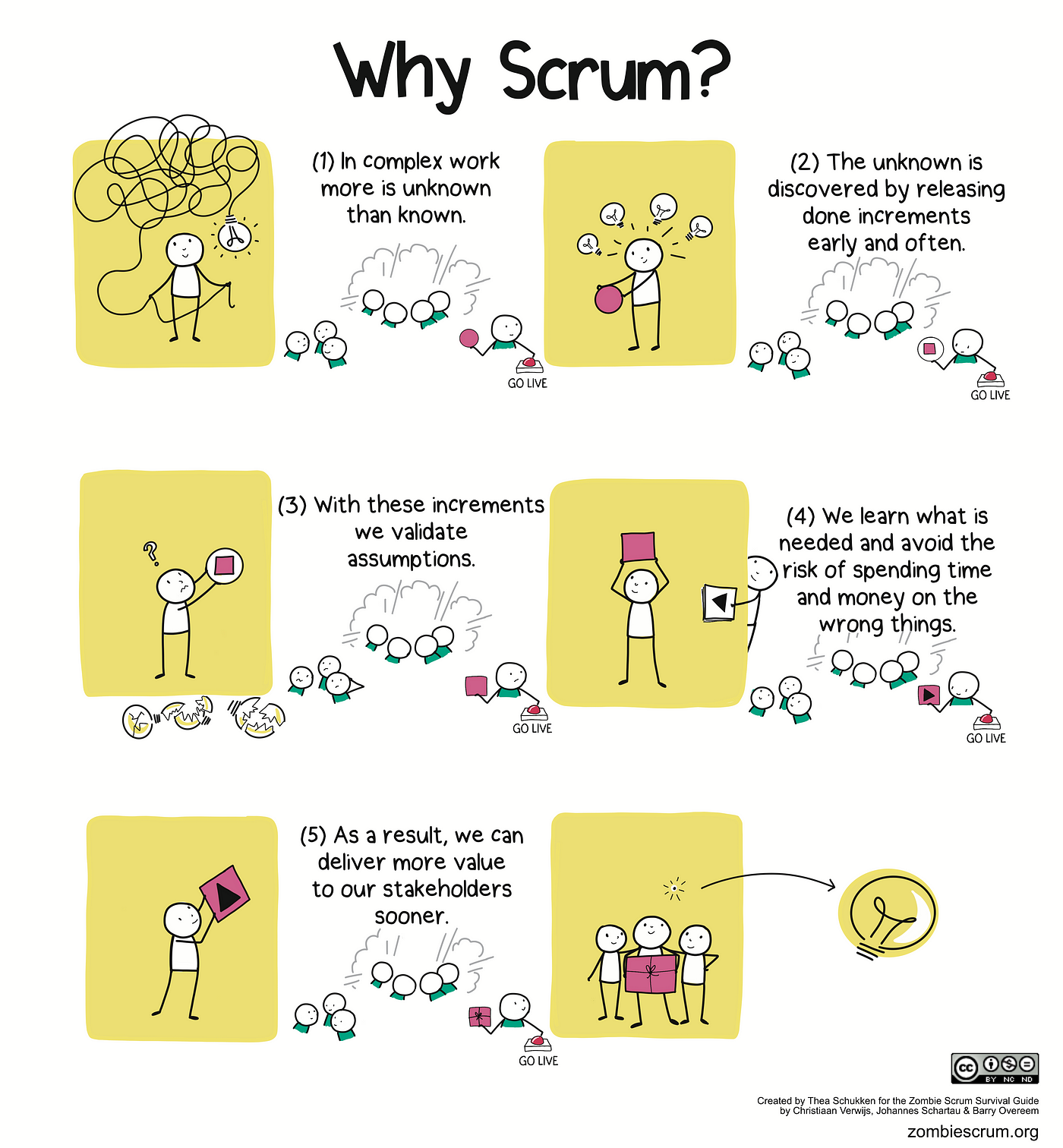
Whenever you teach Scrum, try doing so without using any Scrum terminology at all. Your answer should never be “because the Scrum Guide says so…”. Instead, teach people the purpose of Scrum and what it makes possible.
The Scrum Master as an impediment remover
As an impediment remover, the Scrum Master supports the team in solving problems. Scrum Masters try to increase the team’s ability to resolve problems on their own. This is something that teams have to learn, and the Scrum Master helps them do so. What may be considered an impediment during the first Sprint, may have become a problem that the team can easily resolve by itself during a future Sprint. So, an impediment is something that impedes the Scrum team’s progress towards achieving a (Sprint/Product-) goal and exceeds their self-managing capabilities to resolve on their own.
The type of impediments a Scrum Master needs to resolve change over time. The average team starts with many impediments to the understanding of Scrum and the Scrum team formation. When the majority of issues are solved there, technology issues enter the focus. Once these are solved, organizational impediments within the value chain (adjacent processes) are popping up (e.g. QA issues, requirements engineering issues, deployment, …). And when the whole value chain is optimized for Scrum, process issues outside the value chain are encountered (e.g. budgeting, career paths, strategy processes,…).
So, in the beginning, a Scrum Master spends most of his/her time with the team. The more the team experienced a team becomes, the more time the Scrum Master spends with the organization. This again relates to the 3 levels on which a Scrum Master should act: team, relationships with other teams, and the wider organization.
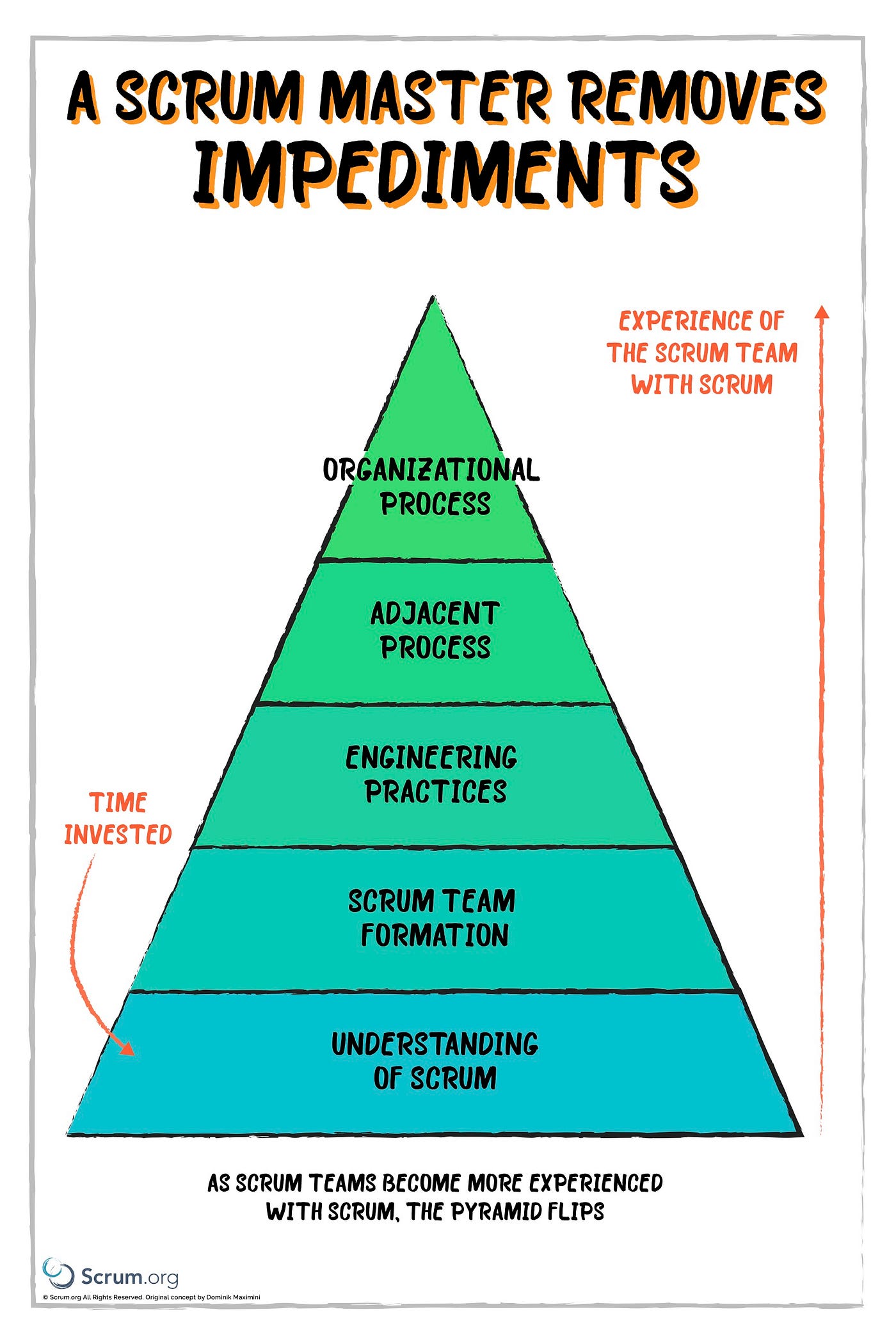
The Impediment Pyramid is a concept by Scrum.org trainer Dominik Maximini. Learn more about removing impediments in this blog post.
The Scrum Master as a coach
As a coach, the Scrum Master supports the team to grow by asking the right questions and drawing attention to the reasons for an empirical process. The Scrum Master coaches individual team members with a focus on mindset and behavior, the Scrum team in continuous improvement, and the wider organization in effectively collaborating with the Scrum teams. Scrum Masters understand that coaching isn’t about giving tips & tricks, but about supporting the team to come up with their own solutions. So, an important skill a Scrum Master should hone is to ask the right questions, at the right moment.
“Coaching is unlocking a person’s potential to maximize their own performance. It is helping people to learn rather than teach them.” — Sir John Whitmore
The obvious moments to ask powerful questions are the Scrum events. To offer you some inspiration, I’ll share a bunch of potential questions with you. Three for each Scrum event. These questions are part of our card deck “50 Powerful Questions”, which helps teams to find their own solutions to persistent problems.
Coaching questions for the Sprint Planning to help the team decide what to focus on in the upcoming Sprint:
- “What would need to happen while working on this Sprint Goal, that would be cause for celebration?”
- “If we just canceled the next Sprint and went on vacation, what would be inevitably lost or become much harder later?”
- “When we achieve this Sprint Goal, what has clearly changed or improved from the perspective of our stakeholders?”
Coaching questions for the Daily Scrum to help the team create a plan for the upcoming day:
- “What is the biggest bottleneck in our current work together? What can we do today towards removing it?”
- “What is keeping us from completing this item? Where do we need help?”
- “Instead of picking up something new, where can you help others get work done that is already in progress?”
Coaching questions for the Sprint Review to help them explore potential product problems together with their stakeholders:
- “How do you know when this problem is present?”
- “How do you contribute effectively to solving the problem?”
- “Do you know anybody who is able to frequently solve this problem and overcome barriers? What behaviors or practices made their success possible?”
Coaching questions for the Sprint Retrospective to help them challenge persistent beliefs that might not be true at all:
- “What happens when this belief turns out to be wrong?”
- “Where do you see this belief confirmed?”
- “What would need to happen for you to let go of this belief?”
Coaching questions to help the team refine Product Backlog items:
- “Which of the acceptance criteria for this item can we get away with by implementing later?”
- “What is the smallest and simplest possible way to implement this item?”
- “If we had to implement this item in only one day, what would we focus on making sure is there? What could be done later?”
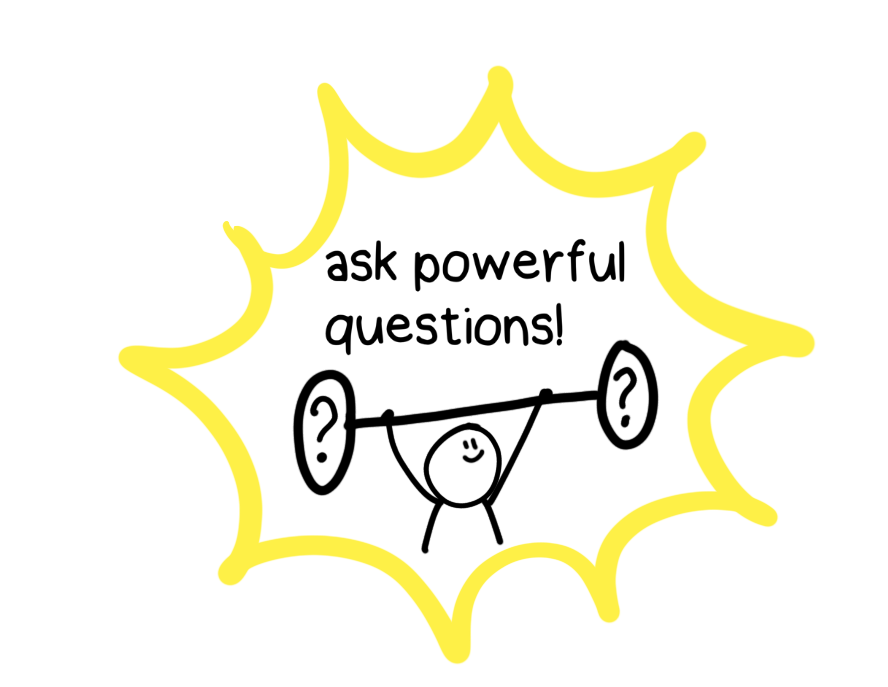
An important skill a Scrum Master should hone is to ask the right questions, at the right moment.
The Scrum Master as a mentor
As a mentor, the Scrum Master helps the team to grow through mentorship or to find suitable mentors for them. An important difference between coaching & mentoring is that coaches work from the experiences and knowledge of the coachee rather than their own. A mentor, on the other hand, actively draws from his/her professional experience and knowledge and helps the mentee learn from that. Each side - coaching and mentoring - is useful and can be powerful on its own.
The Scrum Master certainly is not always the appropriate mentor for every team member. As mentioned before a mentor has in-depth knowledge and experience of a certain topic. It might be that another team member happens to be the ideal mentor or someone from outside the team. A great Scrum Master has a keen eye for potential student-mentor relationships and knows how to establish them. All with the intention to build a great team and help individuals flourish in their personal growth.
In this article, I explain the value of Liberating Structures for Scrum Masters. Liberating Structures allow Scrum Masters to fulfill their role according to their preferred stances. If you want to spark mentorship within your team, consider trying the structures UX Fishbowl, Wise Crowds, or Conversation Cafe. All of these structures encourage (Scrum) practitioners to share experiences & lessons learned with each other. By offering this structure, you’re not the mentor yourself, but you do allow mentorship to take root.

If you want to spark mentorship within your team, consider trying the structures UX Fishbowl, Wise Crowds, or Conversation Cafe.
The Scrum Master as a facilitator
As a facilitator, the Scrum Master uses the empirical process of Scrum by helping the team make their work transparent, frequently inspect their progress, and make adaptations based on new insights. To allow empirical process control, the Scrum framework uses three pillars:
- Transparency: you gather data — like metrics, feedback, and other experiences — to find out what is going on
- Inspection: you inspect the progress with everyone involved and decide what that means for your ambitions
- Adaptation: you make changes that you hope will bring you closer to your ambitions;
This cycle repeats as often as necessary to catch deviations, unexpected discoveries, and potential opportunities that emerge as the work is done. It happens not once a year or when the project is completed, but continuously on a daily, weekly, or monthly basis. Rather than making decisions based on assumptions about potential futures, you’re instead making decisions on the data you’ve collected up to this point. This is empiricism. And this is what a Scrum Master should facilitate.
So, questions a Scrum Master should continuously ask him/herself are:
“What is it, that I should make transparent or visible today?”
“How can I support the team with effective inspection?”
“How can I help the team turn inspection into adaptation?”
As a facilitator, the Scrum Master helps the team understand and achieve their objectives by promoting collaboration, optimizing the process, and creating synergy. They support everyone to do their best thinking, try not to take sides, and provide charismatic authority. A Scrum Master should facilitate by setting the stage and providing clear boundaries in which the team can collaborate to discuss their ideas. One obvious occasion to facilitate is the Scrum events, but only if needed and requested by the Scrum team.
Whenever the Scrum Master acts as a facilitator, (s)he should always do this with the Scrum values in mind, because the Scrum values help you build trust. And trust is necessary to work empirically and to create a strong foundation for the pillars of Scrum. So, have the courage to remove people from the Sprint Retrospective that aren’t part of the Scrum team (and this team doesn’t want this person to be there). Encourage openness by facilitating the Sprint Review in such a way, the true state of the product becomes transparent. Facilitate the Sprint Planning in such a way the team defines a Sprint Goal, which gives the team focus and something tangible to commit to.
It’s important to understand that facilitation goes beyond Scrum events. Sure, the Scrum events can be powerful facilitation opportunities for a Scrum Master. But the more experienced a team becomes, the less it’s necessary to get involved in those events. Ideally, the Scrum Master helps to facilitate transparency, inspection, and adaptation across the entire organization. Again, this requires the Scrum Master to act on multiple levels, which is necessary in order to remove persistent impediments.

As a facilitator, the Scrum Master uses the empirical process of Scrum by helping the team make their work transparent, frequently inspect their progress, and make adaptations based on new insights.
The Scrum Master as a change agent
As a change agent, the Scrum Master helps the organization as a whole to work more effectively with Scrum. They are in a perfect position to move the organization towards an environment where Scrum can thrive. They see what is happening in the most fundamental units of work — the Scrum teams — on a daily basis. The Scrum Master can initiate conversations and collaboration with other Scrum teams, departments, and managers. You will collaborate with people from the HR, Finance, and Sales departments and jointly remove impediments that block the team's progress. As such, the Scrum Masters show the necessary leadership to influence the organizational system from the perspective of the Scrum team.
As a change agent, the truly great Scrum Masters become visible. These are Scrum Masters that know how to shift the status quo and help create a more suitable environment. They know when to be disruptive and when to be careful. They understand organizational changes can take a longer period of time. However, their willingness to change acts as catalysts to drive the organization forward. The strength of Scrum is making bottlenecks and problems visible, great Scrum Masters create support within the organization to truly resolve these dysfunctions. Everything with the ultimate goal of creating a culture in which Scrum teams can thrive!
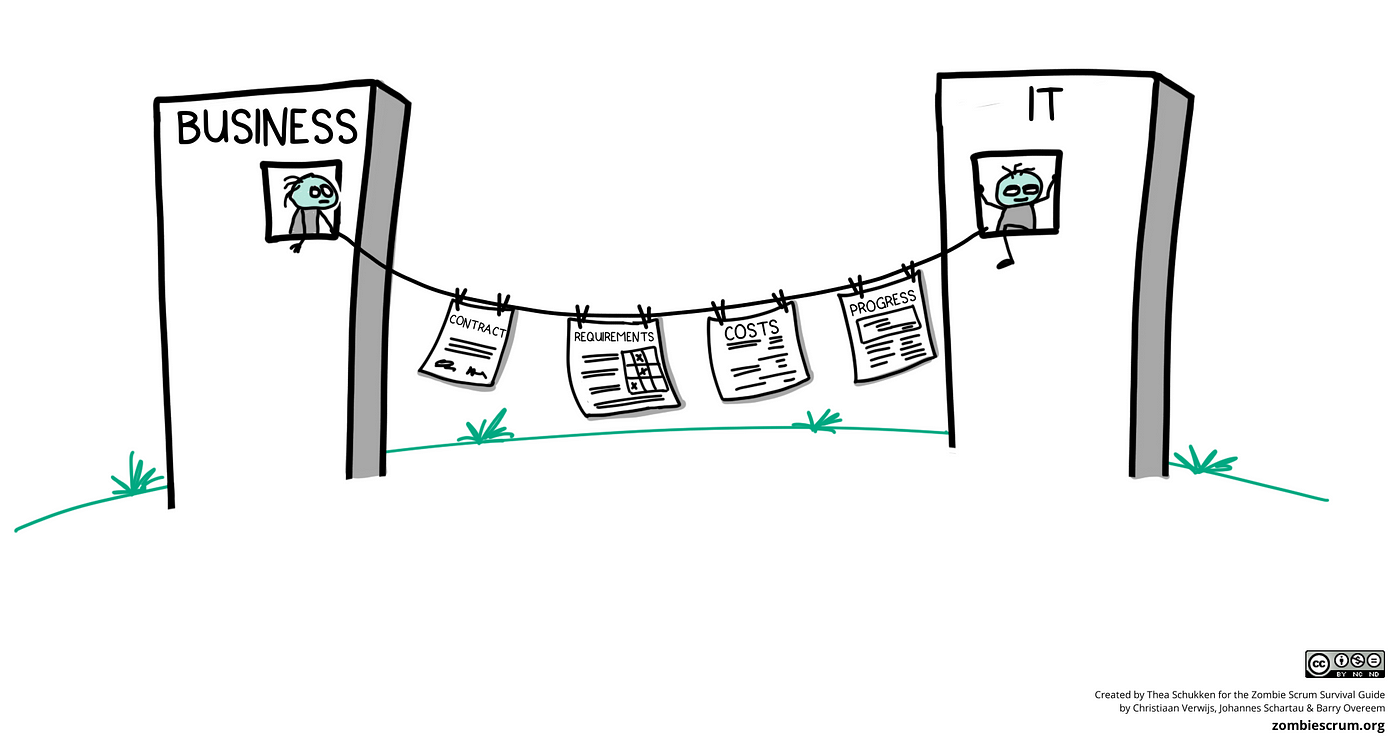
The Scrum Master should show leadership and influence the organizational system from the perspective of the Scrum team. One common example is to close the gap between ‘business’ and ‘IT’.
Why The Scrum Master Is Always A Servant Leader
So, why don’t I consider servant leader a valid stance anymore? It’s not because the Scrum Guide changed servant leadership into true leadership. It’s because servant leadership isn’t a stance you sometimes fulfill. As a Scrum Master, you should always have the mindset and attitude of a servant leader, regardless of the stance you take. As a servant leader, you teach, facilitate, coach, mentor, remove impediments, and spark change.
So, rather than drawing attention to yourself, you help others be as effective as possible. You don’t manage or lead the team by telling them what to do or how to do it. The only area where you should take a strong position is when decisions are made that adversely impact the empirical process or the degree to which members of the team feel safe to take interpersonal risks.
A Scrum Master can show servant-leadership by…
- Restraining from solving and instead ask questions which encourages the team members to figure out their own solutions;
- Showing vulnerability by being open about problems, personal issues or anxiety lowers the barrier for others to be open as well;
- Creating a safe environment, where constructive disagreement is encouraged and team conflict is considered as an opportunity for growth and improvement. But also to intervene in order to protect the Scrum process and the health of the team.
The Scrum Master leads by example, by respect, and by the ability to influence the organization for the Scrum team and its effectiveness. The Scrum Master should lead by values, courage, and commitment, but also by stubbornness. Stubborn by having strong beliefs and the intention to change the organization.
Servant leadership proves to be the backbone of the Scrum Master role. Its philosophy and practices increase teamwork and create an environment in which individual growth can flourish and endure. As a servant-leader, the Scrum Master can help the team act upon the Scrum values of courage, openness, respect, focus, and commitment and realize their full potential.
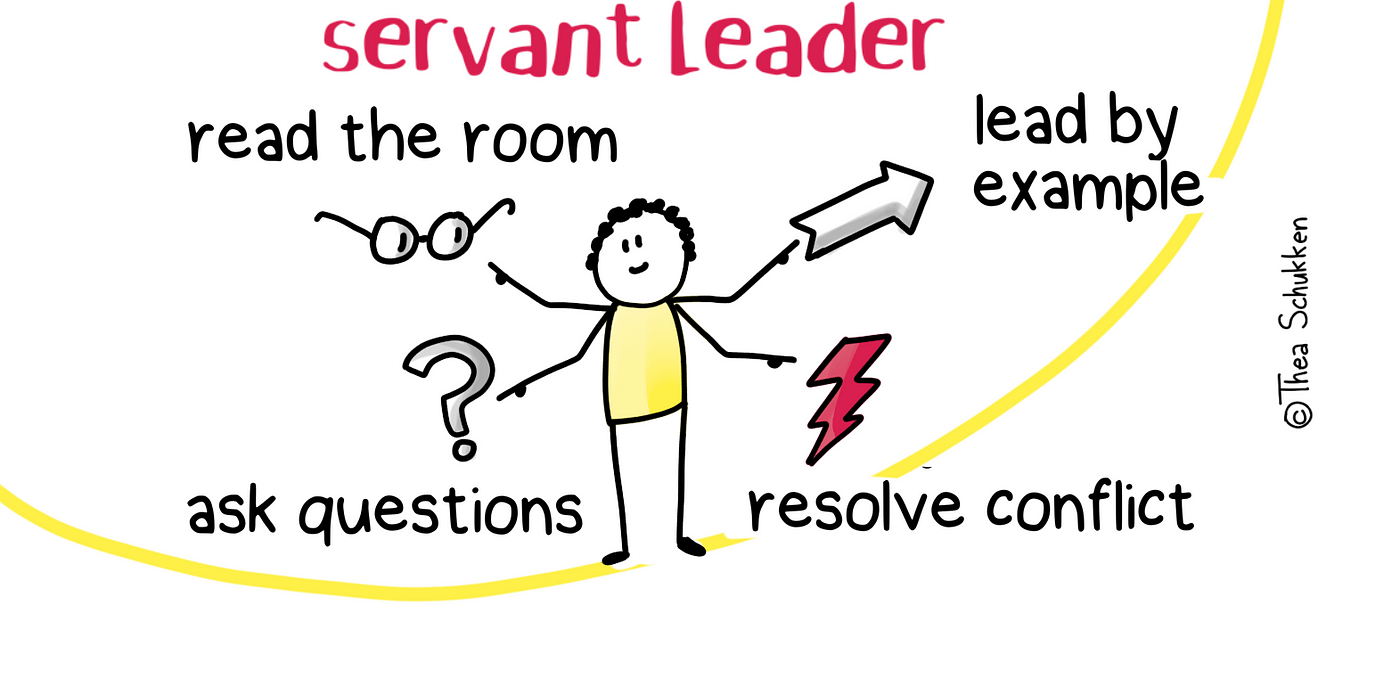
As a Scrum Master, you should always have the mindset and attitude of a servant leader. Regardless of the stances you take.
Why Manager Isn’t A Stance Anymore
There is a difference between “Management” and “Manager”. Management is an activity; the manager is a role. Management as an activity will always be present within organizations. The difference with ‘traditional’ organizations is the way management is done. Within Agile organizations management as an activity is done ‘horizontal’, instead of the ‘vertical’ approach traditional organizations prefer.
As Steven Dennings describes in the article “Why do managers hate Agile”; organizations that apply ‘vertical’ management have individuals compete for promotion. Managers assign tasks, managers assess performance, and communication is top-down. The purpose is to make money for the shareholders. ‘Horizontal’ management exists with the purpose of delighting their customers. Making money is the result, not the goal of the activities. It supports enabling over control, stimulates innovation, and focuses on horizontal communication.
Organizations that embrace Agile, with Scrum as a potential framework, apply horizontal management. Within these organizations, the teams manage themselves. They make their own decisions about their work and manage the execution. Team members have a strong drive to cooperate and know that unless all succeed in their part, none will succeed on the whole. The team shares a common purpose through product-, sprint-, and release goals.
When you compare horizontal management to a Scrum team, they can be viewed as a team full of managers. The Developers manage their work during the Sprint and the quality of the product increment. The Product Owner manages the product vision, roadmap, and return-on-investment. The Scrum Master manages the Scrum process and the impediments that exceed the team’s ability of self-management. As such, management is an integral part of Scrum. It’s distributed across the three accountabilities.

Management is an integral part of Scrum. It’s distributed across the three roles: Scrum Master, Product Owner, and Developers. Each with their own accountabilities.
So, why did I decide to remove ‘manager’ as a Scrum Master stance? Well, not because it’s wrong. But mostly because it triggered too much confusion and proved not to be helpful. The purpose of sharing my view on the Scrum Master stances has always been to help the community gain a better understanding of the role. Ideally, it helps organizations to truly understand the role and triggers Scrum Masters to fulfill the role more effectively. In the past years, I noticed that the ‘manager’ stance doesn’t have the desired impact. Some people even considered this a reason to act as the team captain, or the team lead, something I totally did not have in mind when describing this stance. In addition, many of the responsibilities are already covered by the other stances. For example, managing the Scrum process is something you do as a teacher, coach, mentor, and facilitator. And managing impediments is obviously something a Scrum Master does as an impediment remover.
Learn More
If this article triggered your appetite to learn more about the Scrum Master role, here’s a list of things to read, listen to, or do.
Articles
- Five Things Every Starting Scrum Master Should Know
- How To Measure The Success Of A Scrum Master?
- Strategies For Being A Remote Scrum Master
Podcast Episodes
- Why Psychological Safety Improves The Effectiveness Of Your Team
- What Makes Scrum Masters Successful?
- Scrum Mythbusters: The Scrum Master Is A Junior Agile Coach
The Liberators Network
The Liberators Network is a global community with 25+ local user groups that exist to help practitioners of Scrum, other Agile methods, and Liberating Structures, to find support, offer help, and draw inspiration. We believe in the power of peer-to-peer inspiration to overcome the tough challenges we face when we try to liberate teams and organizations from ineffective ways of working.
Professional Scrum Master II class
Another option is to join the Scrum.org PSM II class. I guarantee a unique, eye-opening experience that is 100% free of PowerPoint, highly interactive, and serious but fun. The class helps you refresh your understanding of empiricism in Scrum and how it helps solve complex problems. And you’ll learn the importance of the Scrum principles & values, how they help build an environment for effective Scrum, and what the Scrum Master can do to support this.
Closing
In this blog post, I shared my perspective of the Scrum Master role, and how it embodies the stances of a teacher, coach, mentor, impediment remover, change agent, and facilitator. I also explained why I don’t consider servant leader and manager valid stances anymore. I hope it helped you gain a better understanding of the role, and triggers you to fulfill the role even more effectively. Always feel free to share your thoughts, questions, or experiences. Let’s learn and grow, together!
